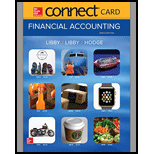
Concept explainers
Analyzing Items to Be Included in Inventory
Travis Company has just completed a physical inventory count at year-end, December 31 of the current year. Only the items on the shelves, in storage, and in the receiving area were counted and costed on a FIFO basis. The inventory amounted to $80,000. During the audit, the independent CPA developed the following additional information:
- a. Goods costing $900 were being used by a customer on a trial basis and were excluded from the inventory count at December 31 of the current year.
- b. Goods in transit on December 31 of the current year, from a supplier, with terms FOB destination (explained in the “Required” section), cost $900. Because these goods had not yet arrived, they were excluded from the physical inventory count.
- c. On December 31 of the current year, goods in transit to customers, with terms FOB shipping point, amounted to $1,700 (expected delivery date January 10 of next year). Because the goods had been shipped, they were excluded from the physical inventory count.
- d. On December 28 of the current year, a customer purchased goods for cash amounting to $2,650 and left them “for pickup on January 3 of next year.” Travis Company had paid $1,750 for the goods and. because they were on hand, included the latter amount in the physical inventory count.
- e. On the date of the inventory count, the company received notice from a supplier that goods ordered earlier at a cost of $3,550 had been delivered to the transportation company on December 27 of the current year: the terms were FOB shipping point. Because the shipment had not arrived by December 31 of the current year, it was excluded from the physical inventory count.
- f. On December 31 of the current year, the company shipped $700 worth of goods to a customer. FOB destination. The goods are expected to arrive at their destination no earlier than January 8 of next year. Because the goods were not on hand, they were not included in the physical inventory count.
- g. One of the items sold by the company has such a low volume that management planned to drop it last year. To induce Travis Company to continue carrying the item, the manufacturer-supplier provided the item on a “consignment basis.” This means that the manufacturer-supplier retains ownership of the item, and Travis Company (the consignee) has no responsibility to pay for the items until they are sold to a customer. Each month. Travis Company sends a report to the manufacturer on the number sold and remits cash for the cost. At the end of December of the current year. Travis Company had six of these items on hand: therefore, they were included in the physical inventory count at $950 each.
Required:
Assume that Travis’s accounting policy requires including in inventory all goods for which it has title. Note that the point where title (ownership) changes hands is determined by the shipping terms in the sales contract. When goods are shipped “FOB shipping point,” title changes hands at shipment and the buyer normally pays for shipping. When they are shipped “FOB destination,” title changes hands on delivery, and the seller normally pays for shipping Begin with the $80,000 inventory amount and compute the correct amount for the ending inventory. Explain the basis for your treatment of each of the preceding items. (Hint: Set up three columns: Item, Amount, and Explanation.)
Want to see the full answer?
Check out a sample textbook solution
Chapter 7 Solutions
Connect Access Card for Financial Accounting
- No chatgpt! Which financial statement lists revenues and expenses?A. Balance SheetB. Cash Flow StatementC. Income StatementD. Retained Earnings Statementarrow_forwardWhich financial statement lists revenues and expenses?A. Balance SheetB. Cash Flow StatementC. Income StatementD. Retained Earnings StatementNo Aiarrow_forwardWhich financial statement lists revenues and expenses?A. Balance SheetB. Cash Flow StatementC. Income StatementD. Retained Earnings Statementarrow_forward
- Which account is a contra-asset?A. Accounts PayableB. Accumulated DepreciationC. Notes ReceivableD. Prepaid Rentcorrectarrow_forwardWhich account is a contra-asset?A. Accounts PayableB. Accumulated DepreciationC. Notes ReceivableD. Prepaid Rentcorrect solutuarrow_forwardWhich account is a contra-asset?A. Accounts PayableB. Accumulated DepreciationC. Notes ReceivableD. Prepaid Rentneedarrow_forward
- Which account is a contra-asset?A. Accounts PayableB. Accumulated DepreciationC. Notes ReceivableD. Prepaid Rentarrow_forwardChoose the items of income or expense that belong in the described areas of Form 1120, Schedule M-1 (Sections: Income subject to tax not recorded on books, Expenses recorded on books this year not deducted on this return, Income recorded on books this year not included on this return, and Deductions on this return not charged against book income.) Note the appropriate amount for the item selected under each section. If the amount decreases taxable income relative to book income, provide the amount as a negative number. If the amount increases taxable income relative to book income, provide the amount as a positive number. The following adjusted revenue and expense accounts appeared in the accounting records of Pashi, Inc., an accrual basis taxpayer, for the year ended December 31, Year 2. Revenues Net sales $3,000,000 Interest 18,000 Gains on sales of stock 5,000 Key-man life insurance proceeds 100,000 Subtotal $3,123,000 Costs and Expenses Cost of…arrow_forwardPlease provide the accurate answer to this general accounting problem using valid techniques.arrow_forward
 Auditing: A Risk Based-Approach (MindTap Course L...AccountingISBN:9781337619455Author:Karla M Johnstone, Audrey A. Gramling, Larry E. RittenbergPublisher:Cengage Learning
Auditing: A Risk Based-Approach (MindTap Course L...AccountingISBN:9781337619455Author:Karla M Johnstone, Audrey A. Gramling, Larry E. RittenbergPublisher:Cengage Learning Intermediate Accounting: Reporting And AnalysisAccountingISBN:9781337788281Author:James M. Wahlen, Jefferson P. Jones, Donald PagachPublisher:Cengage Learning
Intermediate Accounting: Reporting And AnalysisAccountingISBN:9781337788281Author:James M. Wahlen, Jefferson P. Jones, Donald PagachPublisher:Cengage Learning

